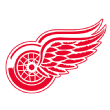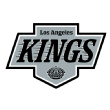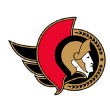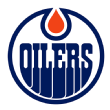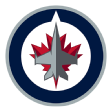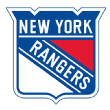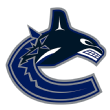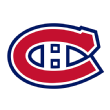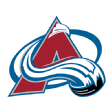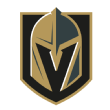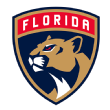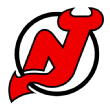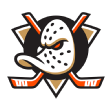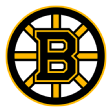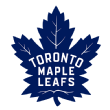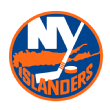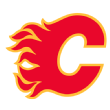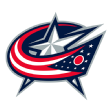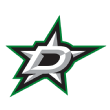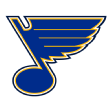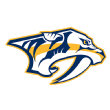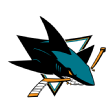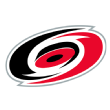Hurricanes top ranking of all 31 NHL defenseman groups

In the final installment of our position group rankings, we're going to take a look at the best and worst defense groups in the NHL. You can open up a couple new tabs for our goalie tandem rankings, and forward group rankings.
Evaluating the contributions of defensemen can be tricky because of how many different responsibilities they have, how many different hats they need to wear depending on their circumstances, and how many different ways it's possible to be effective even if it doesn't immediately look like it to the naked eye.
It's worth noting that this list is focusing on individual defensemen and not the concept of team defense itself. Thank goodness that's the case, because between the players themselves, the coach's system, and the goaltending behind them, there's way too many variables to consider when it comes to trying to figure out how the credit should be divvied up for a team's ability to keep the puck out of its own net.
Jump to a team:
ANA | ARI | BOS | BUF | CGY | CAR | CHI
COL | CBJ | DAL | DET | EDM | FLA
LA | MIN | MTL | NSH | NJ | NYI
NYR | OTT | PHI | PIT | SJ | STL
TB | TOR | VAN | VGS | WSH | WPG
31. Detroit Red Wings
The main reason the Red Wings found themselves in the 29th spot of our Watchability Rankings was because of their weak blue line, which looks like it'll be the worst in the league barring some monumental leaps from a couple of young defenders. Niklas Kronwall may finally be off the books after retiring this summer, but with Mike Green, Jonathan Ericsson, and Trevor Daley all still around one more season -- and making roughly $12.5 million combined -- this group's outlook remains bleak in the present day.
It's funny how quickly things can change in this sport. Despite the team taking Dennis Cholowski 33 picks ahead of Filip Hronek in the 2016 draft, Hronek has since leaped Cholowski on the pecking order. Hopefully he will get as many minutes as he can handle in lieu of all of those aforementioned veterans, because his offensive ceiling looks quite promising. He's one of those players that's produced every single step of the way, which makes it far more plausible that he'll continue to do so at this level when given the chance. With 23 points in 46 games despite averaging south of 20 minutes per game, there's no reason why he shouldn't be playing more as this franchise continues to rebuild and take stock of what it has in its young players.
30. Los Angeles Kings
Poor Drew Doughty. Here's a list of every defensive partner he played with last season and how much time he spent with each of them at five-on-five:
- Derek Forbort: 1,248:30
- Dion Phaneuf: 144:00
- Oscar Fantenberg: 76:27
- Jake Muzzin: 76:25
- Alec Martinez: 45:16
- Sean Walker: 13:54
- Kurtis MacDermid: 12:51
- Daniel Brickley: 8:15
- Matt Roy: 7:13
- Paul LaDue: 3:04
I'd promise I didn't make any of those names up, but even I can't be totally sure of that at this point. Fantenberg and Muzzin were traded, Phaneuf was bought out, and Martinez seems like a good candidate to be dealt at some point this season.
It's quite a bleak list, and as good as Doughty has been over the years, even he wasn't able to squeeze much juice out of his situation last season. The Kings were hammered with him on the ice, getting outscored 67-47 and managing shot and high-danger chance rates south of 47%. I wonder if either party is starting to have any regrets about that eight-year, $88 million extension that kicks in this season.
29. Ottawa Senators
A printout of the Senators Cap Friendly page deserves to be hung in some sort of museum, with the section for "defensemen under contract" needing to be prominently featured front and center.
Before Thomas Chabot's well-earned extension kicks in next summer, they've committed under $12 million total in cap space to their top six defenders. It gets better -- only three of those defensemen are making over a million dollars this season, and they're Nikita Zaitsev ($4.5 million), Ron Hainsey ($3.5 million), and Mark Borowiecki ($1.2 million). The last two are expiring after this year, and Zaitsev is only actually getting paid one-third of that figure by the Senators after the Leafs picked up the tab on the rest.
It seems their plan this summer was to look at their Ontario counterpart's depth chart, identify their worst defensemen, and then go and get them. It's a bold strategy after what happened with Dion Phaneuf last time, so let's see if it pays off.
All is not lost, however. With Chabot and Erik Brannstrom, they have their next cornerstones in place, which is the toughest step in a rebuild. They've also shown mercy to their fans by avoiding another "will they or won't they?" with Chabot for the foreseeable future after locking him up for eight additional seasons following this one. He was a monster offensively last season, finishing in the top 10 for goals and points among all defensemen at both even strength and all situations.
28. Chicago Blackhawks
The Blackhawks were an absolute tire fire in their own zone defensively last season. Part of that can be attributed to a lack of baseline talent, but in extreme cases like this one, a lot of it has to do with a fundamentally flawed game strategy. It was so bad that you almost can't even say that it was a bad game plan because that would imply that there actually was one in the first place, which didn't seem to be the case last season in Chicago. They were constantly scrambling around the defensive zone, chasing the puck, leaving passing and shooting lanes wide open and throwing their goaltenders to the wolves.
It'll be interesting to see how different things are in that regard this season. Head coach Jeremy Colliton finally gets the benefit of a full offseason and training camp to install his system, a much-needed development after the unenviable position he was put in by having to take over in-season for a coach of Joel Quenneville's legendary status.
They also went out and added Olli Maatta and Calvin de Haan to the blue line, which should significantly improve their ability to defend in their own zone. While neither guy looks pretty doing it -- and in Maatta's case he looks particularly bad when having to defend against attackers on the rush -- both are quite adept at doing the dirty work on the defensive end when it comes to breaking plays up with active sticks. The bar to clear here for the Blackhawks is quite low.
27. Edmonton Oilers
There are no two ways about it: The Oilers desperately need a healthy and productive Oscar Klefbom this season. After a tremendous 2016-17 season in which he played all 82 games, scoring 12 goals and 38 points, and helping eat up a ton of minutes on the team's top pairing, it's been a grind since then. He missed 16 games and 21 games in the past two seasons, and hasn't looked quite right even when he's managed to be on the ice.
26. Winnipeg Jets
It's hard to remember an individual position group's outlook plummeting more rapidly than the one for Winnipeg's blue line has over the course of just one summer. To contextualize the losses the Jets are facing, here are their five most heavily relied upon defensemen last season:
- Jacob Trouba: 1,434:13 five-on-five minutes, 1,876:00 total minutes
- Tyler Myers: 1,304:24 five-on-five minutes, 1,627:45 total minutes
- Ben Chiarot: 1,281:25 five-on-five minutes, 1,452:04 total minutes
- Josh Morrissey: 989:51 five-on-five minutes, 1,321:54 total minutes
- Dustin Byfuglien: 767:19 five-on-five minutes, 1,023:04 total minutes
They've definitely lost the top three on this list and have to at least prepare for the realistic possibility of life without Byfuglien as well. It's worth noting that after getting Patrik Laine and Kyle Connor signed the Jets have managed to leave the exact amount of cap space open to slide his salary back into the mix should he decide that he'd like to return to playing hockey this season. Let's just say that I don't think that's a coincidence.
As for the others, there's only so much they could've ultimately done. It's perfectly understandable that they let Myers and Chiarot walk in free agency given what they received, and they were never going to get fair value for Trouba given how little leverage they had. But the issue is that they haven't really done anything to address these losses, and instead look to be hoping that Sami Niku can take a step in his development and Neal Pionk is better at hockey than he's shown at any point thus far in his career.
The result is going to be a whole lot of Josh Morrissey. His ice time and production have steadily increased every season since he came into the league in 2016-17, and the only reason he was fourth in total usage among Jets defenders was last season was because of the 23 regular season games he missed with injury. While he handled going from 20:27 per game to a career high 22:24 minutes per game, that figure is going to pale in comparison to how much he'll presumably need to play this season.
25. New York Rangers
Everyone is excited about the Rangers this season, and justifiably so. They have a ton of shiny new toys, and it'll be fun to see how all of the pieces fit together. There's no doubt they'll be incredibly entertaining to watch, but I do have my questions about how good they'll actually be. A large part of that is because of the defense, which is still a work in progress despite the additions of Jacob Trouba and Adam Fox.
It's not a huge issue because of all the pieces they have coming in the pipeline at the position -- whether it be K'Andre Miller or Nils Lundkvist or Matthew Robertson -- but for the present day, this group still leaves a lot to be desired. Especially since I have no confidence that Marc Staal won't be overused for seemingly the millionth consecutive season.
24. Vancouver Canucks
Let's play a blind résumé guessing game:
- Player A: 16 five-on-five points, -3.4 goals above replacement, 48.7% on-ice shot share, 46.7% on-ice goal share, 47.5% on-ice expected goal share
- Player B: 20 five-on-five points, +10.7 goals above replacement, 54.7% on-ice shot share, 53.8% on-ice goal share, 55.6% on-ice expected goal share
Both players are defensemen. Both players were unrestricted free agents this past summer. Both players signed with the Canucks. Player A signed for six years and $36 million. Player B signed for two years at $2 million per season. Player A is Tyler Myers, while Player B is Jordie Benn.
If I have one wish for the Canucks' blue line this season, it's for common sense to prevail and Quinn Hughes to be used on the top power play unit. It's far more likely that those honors go to either Alex Edler (the incumbent, who has been there since forever) or Myers (because he just got paid a lot of money and they'll want to justify it), but Hughes is their best option for the role by a mile.
23. Pittsburgh Penguins
When you've enjoyed the kind of success the Penguins have, it becomes easy to develop a certain level of hubris that leads you to believe you can take someone else's garbage and turn it into gold by bringing it into your house. They salvaged Justin Schultz as a reclamation project when it looked like he was a lost cause, but they didn't stop there ... and the results haven't been quite as glowing since.
It's only been one season, but it's not too early to proclaim the Jack Johnson experiment closed and shut. He was as bad as we expected him to be in his first season for the Penguins, continuing the career-long trends of his teams getting hammered by the opposition when he's on the ice. The door for the Erik Gudbranson experiment remains slightly ajar, after a surprisingly promising 20-game stretch to end the season. His underlying numbers -- the same shot, goal and expected goal shares in which he's been buried over the years -- were sparkling across the board. I'm not willing to discard 450 bad games because of 20 good ones just because the latter came more recently, but I'd be remiss if I didn't give him credit for the improved play considering all of the criticism I've given him in the past.
That said, this Penguins' blue line is not good. This ranking might be overly generous, but it's entirely a testament to how terrific Kris Letang is and how much he single-handedly moves the needle. The concern is that the 79 games he played in 2017-18 was the only time he's missed fewer than 10 games since 2010-11. We need to temper our expectations for how many games he'll be able to play next season, which is quite alarming because of how much this team leans on him when he's in the lineup.
22. Buffalo Sabres
There were very few silver linings to Buffalo's dreadful second-half struggles last season, but one of them was how the distribution of minutes started to flip as the campaign went along. After easing Rasmus Dahlin into his first couple of spins through the league by playing him under 20 minutes per night for the months of October and November, they really started to unleash him from December onward by routinely feeding him somewhere between 21 and 23 minutes a game.
The most important development is that he started to wrestle away minutes and opportunities from the inferior Rasmus (Ristolainen), eventually supplanting him in both power play and five-on-five usage. In the final 20 games of the season, no Sabres defenseman average more ice time with the man advantage than Dahlin's 2:33, and only Brandon Montour played more at five-on-five than Dahlin's 18:01.
Just like with any young defenseman, there were (and will continue to be) some growing pains as he figures out little tricks of the trade on the fly. The only way to get better and eventually realize all of the potential is to work through it and learn through trial and error. What Dahlin has already accomplished despite his age and inexperience is incredible. As an 18-year-old rookie playing an unforgiving position, he managed to put up 44 points, lead the Sabres to net positive shot and expected goal shares at five-on-five with him on the ice, and have the highest goals above replacement (+9.8) on the team's blue line (next up was Lawrence Pilut at +3.9).
The Sabres have many things to iron out, but their blue line actually appears to be headed in the right direction. With a nucleus of Rasmus Dahlin, Colin Miller, Brandon Montour, Lawrence Pilut and Henri Jokiharju, they have a group that's young, can skate and can do dynamic things with the puck. That's quite an impressive feat considering they didn't have any of those players on their roster as recently as a year and a half ago.
21. Arizona Coyotes
As was the case with the rest of their roster, the Coyotes' blue line wasn't immune to the injury bug last season. Oliver Ekman-Larsson and Niklas Hjalmarsson missed just one game between them, but aside from those two and Alex Goligoski, every defenseman that suited up for Arizona last season missed a significant period of time.
That makes it tricky to evaluate the group as a whole because of how many moving parts there were, but presuming they're fully healthy entering the 2019-20 season, they should be a solid group. Based on the way the Coyotes are constructed and how starved for offense they are, they'll need them to push the envelope and create more.
20. Montreal Canadiens
It's a shame that Jake Gardiner reportedly rebuffed Montreal's advances in free agency this summer, because he would've been the perfect fit for them alongside Shea Weber. Because of that swing and miss, they now enter yet another season without an optimal left-handed partner for Weber, which is quite disappointing considering it has been and continues to be their most pressing need.
That's especially because of how important it is for them to not only keep Weber on the ice but squeeze as much of the remaining juice out of him as they can. He's still an excellent player, but he's now missed 56 and 24 games in the past two seasons and turned 34 this summer. Getting something more closely resembling a full workload out of him would go a long way but seems a bit optimistic at this point.
19. Colorado Avalanche
From the Watchability Rankings:
"It's wild to think that Cale Makar doesn't have a single regular-season game to his name yet given how good he looked in the postseason after his NCAA campaign finished in the spring. I can't wait to watch him and Sam Girard continue to probe around in the offensive zone and help redefine how teams use their defensemen in set formations when they have possession of the puck."
The loss of Tyson Barrie will surely sting, but the Avalanche were uniquely positioned to make that type of trade this summer because of talent they have on the way at the position. Makar is already here, and his postseason showing is an indication that he's ready to step right into the void Barrie's departure has left.
Colorado also drafted top defenseman Bowen Byram at No. 4 overall, and he figures into the plans at some point as well. He's already been sent back to the WHL, but given how smooth and polished his game already is, it wouldn't be the craziest thing to suggest he could make an impact sooner rather than later.
18. Vegas Golden Knights
The one thing currently missing from the Golden Knights' roster is a traditional No. 1 defenseman, though it's somewhat fitting that they find a way to get the job done in a way where they're greater than the sum of their parts.
The player who has the best chance of becoming a No. 1 stud is Shea Theodore, but at the moment their undisputed leader on the back end is Nate Schmidt. If you created a defenseman in a lab, it might look something like him, with his beautiful skating allowing him to cover ice in the blink of an eye and defend without committing penalties. Analysis through the lens of goal metrics can be tricky given the volatile nature of depending on random luck on a season-to-season basis, but it's worth noting that Schmidt's teams have always produced with him on the ice at five-on-five:
- 2015-16: 1,157:55 minutes, 43-34 goal differential
- 2016-17: 858:40 minutes, 42-22 goal differential
- 2017-18: 1,329:09 minutes, 63-48 goal differential
- 2018-19: 1,084:46 minutes, 57-45 goal differential
Part of it is because he's had the good fortune of playing on some terrific teams, but part of it is also because he's such an excellent player in his own right.
17. Florida Panthers
Aaron Ekblad is 23 years old and has been in the league for five seasons now, but he's already had a long and winding career. After bursting onto the scene as an 18-year-old defenseman and winning the Calder Trophy, his name brand value has largely exceeded his actual on-ice contributions. The repeated head injuries surely played a role, but it's also a reminder of how difficult it is to stay at the top of your game, especially at that position. The good news for both Ekblad and the Panthers is that he somewhat quietly had a monster bounce-back 2018-19 season. Here are his goals above replacement by season, according to Evolving Wild's model:
- 2014-15: +12.9
- 2015-16: +7.1
- 2016-17: -3.0
- 2017-18: +1.6
- 2018-19: +15.9
That 15.9 was good for 31st among all skaters, and eighth among defenders. It's going to be tough for him to put up the counting stats to match that kind of underlying success if he can't break onto Florida's vaunted top power-play unit. But that's more of a problem for fantasy hockey than real life, because he's doing pretty much everything else.
16. New Jersey Devils
It seems somewhat strange to say about a player with a resume like his, but if you're drawing up a list of who has the most to prove this season, P.K. Subban has to be near the top. It would be one thing if he were just callously discarded by his former team this summer, but it's compounded by the fact that so few teams seemingly made an effort to jump at the opportunity to acquire him.
The remainder of his contract was cited as the main reason why, but with just three years at $9 million per season left on it, it's not nearly as onerous as you'd be led to believe. The health is a legitimate concern after Subban missed a significant chunk of time in three of the past four seasons, but it's still quite remarkable how quickly perception of him and his abilities has shifted considering he was a Norris Trophy finalist just two years ago.
If he's able to get back that unique level of dynamic playmaking to his game, his addition to the Devils' defense corps will be enormous. Beyond just his own contributions, his ability to do everything, play against the other team's best players, and soak up a ton of minutes will allow players like Will Butcher and Damon Severson to slide down the depth chart into roles better suited for their skill sets. The domino effect of having a great player like Subban sometimes gets overlooked, but it's real and quite impactful.
15. Anaheim Ducks
Hampus Lindholm and Josh Manson remain tremendous defensemen who at their best have shown a knack for eliminating everything the opposition wants to do offensively with the puck.
That said, it's tough not to look at this group and lament what was and could've been, given the incredible amount of talent they had as recently as a couple of years ago. It's stunning to look back and think about how there was a point in the 2016-17 season when the Ducks had the following defensemen on the roster at the same time: Lindholm, Manson, Cam Fowler, Shea Theodore, Sami Vatanen and Brandon Montour.
It serves as a cruel reminder of how unforgiving the hard salary-cap world can be, and how quickly things can change with a couple of ill-timed mistakes.
14. Philadelphia Flyers
This is admittedly more of a calculated bet on the talent, and the belief that it'll eventually shine through, because the results for this crew's notable players were highly underwhelming last season. Considering the $40 million-plus investment they made in Ivan Provorov this summer, the Flyers appear to be on the same page.
Both Provorov and Shayne Gostisbehere were quite disappointing last season, both seeing their underlying numbers plummet from the previous campaign. In 2017-18, the Flyers outscored opponents 65-54 with Provorov on the ice at five-on-five and 58-42 with Gostisbehere in those situations. In 2018-19, however, they were outscored by margins of 81-67 and 58-42, respectively. Both players have already flashed too much ability and are still young enough to suggest that it was more of a blip than the new norm for the two of them.
We'll see how much juice Matt Niskanen and Justin Braun have left in the tank, but they're both reliable veterans and steadying presences who could come in handy given the volatile surroundings in which the Flyers always seem to find themselves.
13. Boston Bruins
It may not feel like it at times -- and you probably wouldn't know it just by looking at him -- but Zdeno Chara is, in fact, human. I'd be willing to listen to the argument that he's less impacted by the effects of aging than the other players in the league, but even he can't hold off Father Time forever.
As Chara approaches 43 years old and 1,700 NHL games, the Bruins need to be more selective about how they use him and when they use him if they want to miraculously continue extending his career. They seem to be well aware of that based on their actions, because they've done a commendable job of easing up on his usage over the past couple of seasons:
- 2015-16: 24:06 average time on ice per game
- 2016-17: 23:20 average time on ice per game
- 2017-18: 22:54 average time on ice per game
- 2018-19: 21:05 average time on ice per game
Last season's usage was uncharted waters for Chara, who hasn't dipped below 22 minutes per game since his first full season in the league in 1998-99 with the Islanders (18:54). He's still the captain of the Bruins and the leader of the team, but at this point of his career he appears to have handed over the keys to the team's defense to Charlie McAvoy. It was an inevitability, but McAvoy finally leaped him to become Boston's most heavily used defenseman at both five-on-five and overall. That's fine for Chara and the Bruins, who should both be treating the regular season as an opportunity to line everything up in preparation for another extended playoff run next spring.
It goes against hockey's ethos, but in this case both parties should be taking a page out of the load-management manual the San Antonio Spurs expertly wrote near the end of Tim Duncan's career.
12. Toronto Maple Leafs
This one is admittedly a bit of a projection because there are many pieces we haven't seen fit into the puzzle yet, but there's plenty of reason to believe that the Leafs' blue line could be markedly improved from the one we saw last season.
The loss of Jake Gardiner is a big one, but they've ostensibly replaced him with Tyson Barrie. Barrie brings an interesting set of skills to this Toronto team as a skilled breakout passer, which feeds right into the long bomb stretch passes they love to try more than any other team in the league.
I'm still skeptical that Cody Ceci is salvageable as a reclamation project at this point considering the 440 games of his we've seen, in which he has shown a startlingly low amount of ability to do even the most routine things. That said, he also has been burdened with a dreadful slew of defense partners, and he's now going from a nightmare environment to one in which he'll be surrounded by a ton of highly skilled players. Getting to play alongside this level of talent can do wonders for a player like Ceci, with a rising tide raising all ships.
The big difference comes in the subtractions, with the front office pulling a move out of the "Moneyball" movie by removing Nikita Zaitsev and Ron Hainsey so that Mike Babcock can't play them any longer. We'll see how they choose to replace those minutes, but if it's with some combination of Rasmus Sandin and/or Timothy Liljegren, that presents a major upgrade in terms of stylistic fit and realistic upside. It was always bizarre that a team that does the things that the Leafs do so well went out of its way to give players with the opposite skill sets significant minutes. At least now the personnel makes way more sense.
11. Minnesota Wild
I have a lot of questions about the Wild, but their blue line definitely isn't one of them.
Ryan Suter might be a cyborg; he just averaged 26 minutes, 42 seconds per game as a 34-year-old last season. Jared Spurgeon has been a common selection for the "most underrated player in the game" discussion for years, but after receiving a $53 million contract, we might have to retire that title. Matt Dumba had 12 goals in only 32 games last season before going down because of injury, and it'll be great to have him back because he's ridiculously fun to watch.
10. New York Islanders
The Islanders are in a position of power right now when it comes to the volume of blue-line talent they've accumulated. Leverage is all about supply and demand, and they're currently sitting in the driver's seat with a ton of talented and capable defensemen in a league that doesn't really have enough of it to go around at the moment. It'll be quite interesting to see what they decide to do with it and how they sort out the logjam, especially if Noah Dobson continues to impress and force their hand in giving him a permanent role, presumably more quickly than they could've anticipated.
Devon Toews continues to be the player to watch just because of the perfect fit between his skills and the Islanders' specific needs. His combination of shot, skating, and willingness to get involved in the play are all things a team the Islanders need. His opportunity and role should only continue to grow as he gains more of Barry Trotz's trust.
9. Calgary Flames
Mark Giordano was out of this world last season, and was more than deserving of being proclaimed the best defenseman in the league for his efforts; it wasn't just a "career achievement" Norris nod.
It was quite a pleasant surprise to see Travis Hamonic turn his career trajectory around and have a nice throwback season. After four consecutive seasons with negative goals above replacement totals and countless injuries, he was a strong +7.5 last season.
It's surprising that there wasn't more noise about the Flames trying to sell high on TJ Brodie last summer. He had quite an impressive statistical season on the surface, but it's no coincidence that it happened after he was reunited with Giordano; he's going to get paid next offseason. From Calgary's perspective, it's possible the Flames thought the potential future return wasn't worth it considering that they're still chasing a Stanley Cup this season, and right-handed defensemen are hard to find.
It's a shame Juuso Valimaki got hurt this preseason, but Ramsus Andersson, Oliver Kylington and Valimaki provide the Flames with a nice pipeline of blue-line talent in the coming seasons.
8. Washington Capitals
The loss of Matt Niskanen via trade this summer initially seemed to be a big one based on name value, but it's worth noting that the previously reliable pairing of Niskanen and Dmitry Orlov had been getting demolished lately. Putting aside the financial implications, there's a legitimate argument to be made that Radko Gudas is a more effective player at this point of his career, even though it never looks pretty. With him, the only question is whether he can control himself and not commit any foolish infractions that'll get him suspended.
The acquisition of Nicklas Jensen at the deadline was a nice one, because he's a quality player in his own right, and the Caps really needed him to cover the minutes they lost after Michal Kempny got injured. Now that Kempny is back, they have plenty of options and flexibility, and should be able to rotate three pairs without any real liabilities.
Credit to John Carlson. After being paid handsomely last summer, he took his game to another level this past season. No defenseman added more goals above replacement than Carlson, according to Evolving Wild's model. He finished in the top five for points at his position, and his underlying numbers were all improved from the rates he'd posted in the past.
7. Columbus Blue Jackets
Seth Jones and Zach Werenski get most of the headlines when it comes to the Blue Jackets' blue line, and deservedly so. They're one of the best pairings in the league, and having the two of them to build around means that Columbus will be just fine moving forward despite all of the pieces it lost this summer.
In particular, Jones is a nearly flawless defender, who will almost certainly win at least one Norris Trophy sooner rather than later. He deserved to be a finalist for the award two seasons ago, and considering he's not even 25 yet, it's only a matter of time before he finally gets there.
The reason the Blue Jackets are ranked so highly is that they have a number of other excellent defensemen who are deserving of some love. David Savard somewhat surprisingly finished 27th among all players in goals above replacement, with his +16.5 being good for seventh best among defensemen -- behind just John Carlson, Victor Hedman, Erik Karlsson, Morgan Rielly, Mark Giordano and Thomas Chabot. Ryan Murray will always be difficult to evaluate objectively because of his draft slot and the fact that he didn't live up to all of the expectations, but he's carved out a nice post-hype niche for himself whenever he has been able to stay on the ice.
Even Markus Nutivaara is a highly gifted young defender who keeps getting better and crushing it offensively on a per-minute basis, and Dean Kukan is a picture-perfect third-pairing defenseman who doesn't get asked to do too much but helps tilt the ice when called upon.
6. Tampa Bay Lightning
It's no coincidence that good teams in this league find a way to stay good, often at the expense of the bad teams. The Lightning are a great example of that idea in practice, as they once again found creative ways to niftily improve their team despite the lack of financial resources to really make any significant changes.
It's fair to argue that their blue line looks even more formidable heading into this coming season than it did a year ago, which is quite impressive given the dire cap crunch they were facing heading into the summer. They cut ties with Dan Girardi and Anton Stralman, allowing one to ride off into retirement and letting the other walk in free agency. Both are big names with great resumes, but neither had much left in the tank at this point given their age and mileage.
The Lightning dipped into their "minor league affiliate" in New York, mining another castoff from the Rangers by signing Kevin Shattenkirk to a one-year deal after he was bought out. It's exactly the type of savvy low-risk, high-upside move a smart team like the Lightning makes, and it should pay off for them. Shattenkirk wasn't ever going to live up to the expectations and salary he was making in New York, but he should flourish in this situation, and show that he still has something left to contribute.
The X factors are Mikhail Sergachev and Erik Cernak, both of whom have already shown plenty of promise and figure to continue improving. It would be a nice luxury for the Lightning if they had each take on a bigger role -- especially Sergachev, who has been stuck with training wheels for the past couple of seasons -- if only to help preserve the elite Victor Hedman and Ryan McDonagh for when the games really matter.
5. Dallas Stars
It feels somewhat strange to give so much love to a group that still feeds meaningful minutes to Roman Polak, but the Stars have so much going for them on the blue line aside from that miscalculation. John Klingberg and Miro Heiskanen are in the conversation as the most dynamic one-two punches any team has to offer, and it's exciting that head coach Jim Montgomery keeps finding creative new ways to get the most out of them.
To wit, Montgomery had a habit of putting Klingberg and Heiskanen in every single possible offensive situation last postseason, often treating us to a five-man combination involving those two along with the Stars' three best forwards (Tyler Seguin, Jamie Benn and Alex Radulov) for offensive zone draws -- despite the fact that those players might have not been playing together otherwise at even strength.
Beyond the top duo, Esa Lindell's underlying numbers are never going to look pretty given his demands and the role he fills on this team, but his more reserved nature is a perfect complement to the flourish of the two playmakers ahead of him.
Beyond that, Andrej Sekera was an important addition to this team's blue line after he was bought out by the Oilers this summer. He's not the player he used to be after all of the debilitating injuries that have piled up, but after returning to the lineup last season he showed that he can still be useful in a depth role. Getting a player with his skill set to soak up the minutes that were given to Ben Lovejoy last season is a big upgrade for this team's transition game, especially as the Stars look for different ways to create secondary scoring.
4. St. Louis Blues
I belong to the camp that believes Colton Parayko was the Blues' most valuable player last postseason. Not only did he play against the other team's very best offensive weapons, but he absolutely devoured them. With his freakish combination of reach and skating ability he eliminated all of their time and space, and made their lives miserable the second they started approaching the blue line.
In the 429:06 five-on-five minutes he played in the 20 games against the Stars, Sharks and Bruins, those opponents managed to score a combined eight goals in that time, and he drew as many penalties as he took. It was a truly special performance that will be one of the lasting memories of the 2019 playoffs.
Not only were his underlying numbers and goal suppression rates remarkable, but the trickle-down effect of freeing Alex Pietrangelo to play softer minutes and produce more offensively was a gigantic reason for the Blues' enjoying the type of success that they did. And while the back end of the contract the Blues gave to Justin Faulk after acquiring him this preseason may not look so great, he is still a difference-maker in the present.
3. Nashville Predators
Losing a player of P.K. Subban's caliber is always going to be a blow regardless of how you slice it, but if there was one group uniquely positioned to cover for it, it's this one. The Predators still have Roman Josi, Ryan Ellis and Mattias Ekholm, each of whom could serve as a top-pairing stud on essentially every team in the league if called upon.
It'll be interesting to see how coach Peter Laviolette decides to spread the minutes around following Subban's departure, and how the respective pairings shake out.
The Predators presumably will be asking a lot of Dante Fabbro this season, and it would be nice if he proves capable of stepping up and seizing a permanent role alongside one of those three. It's a big ask of a player who has just 10 combined games under his belt at this level, but it's also a manageable one given the opportunity to rely on an outstanding defensive partner and his pedigree as a prospect. At the very least, his slick skating and puck skills will fit right in with the pace at which the Predators would ideally like to play.
2. San Jose Sharks
Despite his admittedly looking like he was functioning at only half capacity with his body betraying him, word of Erik Karlsson's demise has been premature and wildly overblown.
In his first season in San Jose he finished 14th in five-on-five points per 60 minutes, and eighth in all-situations points per 60 among all defensemen. With Karlsson on the ice at five-on-five, the Sharks controlled 59.5% of the shot attempts, 58.2% of the shots on goal and 59.5% of the expected goals. All of those stats ranked among the league's very best, and even on a dominant all-around team, Karlsson still managed to have one of the biggest net positive impacts of anyone. John Carlson and Victor Hedman were the only defensemen who finished ahead of him, as he tied with Morgan Rielly with +18.5 goals added above replacement.
The 53 games were the fewest Karlsson has played since 2012-13, and the 24:29 average ice time was his lowest since 2010-11, but he's in a different situation now. With the depth the Sharks have and their playoff spot expected to be secure in the Pacific Division, they don't need to ride Karlsson into the ground during the regular season to stay afloat like the Senators did during all of his peak campaigns.
Given his injury history he'll require some closer monitoring, but we have to assume given the investment the team made that he's back on track. With Brent Burns also in the mix, Sharks coach Peter DeBoer can basically have one of the two on the ice for the vast majority of any game, a huge advantage.
1. Carolina Hurricanes
Even after the Justin Faulk trade, the Hurricanes still have the deepest and most complete set of defensemen in the league from top to bottom. They can all skate, they can all move the puck and they're all typically underrated in most circles. Jake Gardiner is the latest addition to the crew, and he's a perfect fit, which makes it even more remarkable that he fell right into their laps on a team-friendly deal.
With Gardiner added to the group, Rod Brind'Amour has some interesting chess pieces to deploy, and it'll be fascinating to see how he decides to use them. It'll presumably be situationally dependent. If they're trailing and looking to generate offense, he can stack Gardiner and Dougie Hamilton together. If they're nursing a lead and looking to shut things down, he can go back to ol' reliable with Jaccob Slavin and Brett Pesce, who have made their bones as one of the league's most devastating shutdown pairings over the past couple of seasons.
It almost doesn't matter who is on the third pairing considering the top four, but now there's a legitimate opening for Haydn Fleury to seize a full-time gig. Speaking of openings, now that Faulk and his high-volume, low-efficiency shooting on the top power play is gone, hopefully the Hurricanes will fully unleash Hamilton on the league. He's still one heck of a player even if they don't, but it's tough not to daydream about the potential results if a team would just fully entrust him with all of the meaty offensive minutes he could handle.
Related Topics
- SPORTS
- ESPN
- CHICAGO BLACKHAWKS
- EDMONTON OILERS
- NEW JERSEY-DEVILS
- ARIZONA COYOTES
- PHILADELPHIA FLYERS
- LOS ANGELES-KINGS
- MINNESOTA WILD
- TORONTO MAPLE-LEAFS
- VEGAS GOLDEN-KNIGHTS
- WASHINGTON CAPITALS
- PITTSBURGH PENGUINS
- NASHVILLE PREDATORS
- CAROLINA HURRICANES
- WINNIPEG JETS
- ANAHEIM DUCKS
- ST LOUIS-BLUES
- NEW YORK-RANGERS
- COLORADO AVALANCHE
- BUFFALO SABRES
- OTTAWA SENATORS
- COLUMBUS BLUE-JACKETS
- SAN JOSE-SHARKS
- FLORIDA PANTHERS
- DETROIT RED-WINGS
- NEW YORK-ISLANDERS
- VANCOUVER CANUCKS
- NHL
- NHL RANKINGS
- TAMPA BAY-LIGHTNING
- BOSTON BRUINS
- DALLAS STARS
- NHL PREVIEW
- MONTREAL CANADIENS
- CALGARY FLAMES
